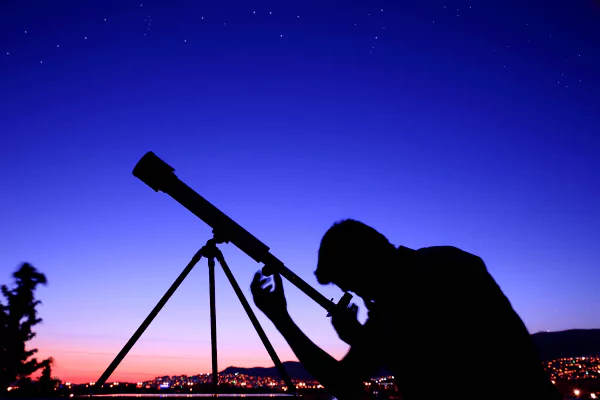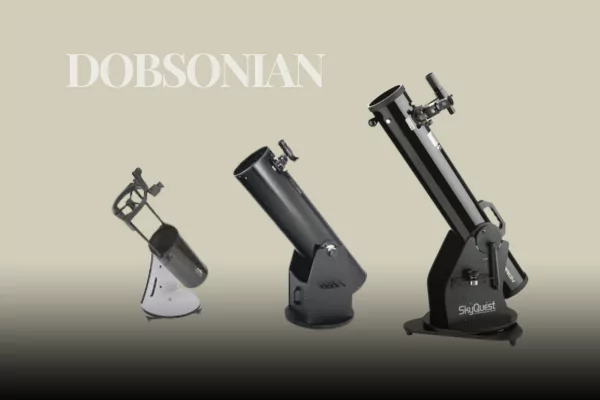Exploring the Planets: The Best Telescopes To See planets
Ever looked up at the night sky and wondered what those sparkling dots are? Observing planets can be magical. It brings the distant marvels of our solar system up close. The right telescope matters. Whether you are an astronomy lover . OR an amateur stargazer, or a science lover, having the right telescope is important. It can make all the difference in your planetary observations. In this blog post, we’ll explore the best telescopes for seeing planets. We’ll also provide essential tips to enhance your stargazing adventures. Get ready to uncover the secrets of the cosmos. If you are a stargazer and want stargazing binoculars, look at our recommendation on the best stargazing binoculars.
Overview of Top Telescopes To See Planets
Choosing the right telescope can be overwhelming, with so many options available. However, focusing on key characteristics can help you make an informed decision. New telescope technology has improved a lot. Now, you can see amazing things from your backyard. Planets are easier to see than ever before.
The Process Behind Our Recommendations
At TelescopeTrove.com, we share your passion for astronomy and take our telescope recommendations seriously. We would never suggest a product we wouldn’t use ourselves. Our selection process involves evaluating various products from various manufacturers, considering factors like product quality, durability, ease of use, performance, and overall value. Whenever possible, we test the telescopes firsthand, and when that’s not feasible, we rely on the insights and experiences of fellow astronomers. We compile all this information and create an objective score for each product, ensuring you get reliable advice tailored to your needs, preferences, and Budget before purchasing.
Importance of Observing Planets
Observing planets is more than just a hobby; it’s a gateway to understanding our universe. Seeing Jupiter’s Great Red Spot or Saturn’s magnificent rings can inspire awe and curiosity. It’s a great way to learn about how planets move. You can also learn about what their atmospheres are like. Plus, you’ll discover more about exploring space. New telescope technology has improved a lot. Now, you can see amazing things from your backyard. Planets are easier to see than ever before.
Critical Characteristics of Planetary Observation Telescopes
Aperture Size and Light-Gathering Ability
A telescope’s aperture is the size of its main lens or mirror. It is important because it gathers light. A larger aperture allows the telescope to gather more light. This makes images brighter and clearer. An aperture size of 90mm to 150mm is generally recommended for planetary observation. This range gathers enough light to see planets clearly. It is not too bulky.
Magnification Power and Image Quality
Magnification decides how much you can zoom in on objects in the sky. But, you must balance magnification with image quality. High magnification can make images blurry if the telescope isn’t good enough. Choose a telescope with different magnification options and good eyepieces. This will give you clear and detailed views of planets.
Portability and Ease of Use
Portability is important. This is especially true if you want to take your telescope to different places. Lightweight and compact designs are more accessible to transport and set up. Telescopes with user-friendly features are helpful. Easy-to-use mounts and alignment systems make stargazing more enjoyable, especially for beginners.
Best Telescopes to See Planets
Sky-Watcher Evostar 90 AZ Pronto Refractor: Great Starter Telescope
The Sky-Watcher Evostar 90 AZ Pronto Refractor is great for beginners. Its 90mm aperture gathers plenty of light, giving you clear and bright views of planets. The refractor design needs little maintenance. The AZ Pronto mount is easy to use and tracks smoothly.
The Sky-Watcher Evostar 90 AZ is perfect for casual stargazers. It is easy to set up and built to last. The telescope comes with two eyepieces for different magnifications. It also has a red dot finder to help you locate celestial objects quickly. You can look at the moon’s craters or Saturn’s rings. This telescope gives you a great view of both.

Sky-Watcher Evostar 90 AZ
The Sky-Watcher Evostar 90 AZ Pronto Refractor offers excellent portability and ease of use, making it perfect for beginner astronomers.
Specs:
| Feature | Specification |
| Aperture | 90 mm |
| Focal Length | 900 mm |
| Magnification Range | Variable (with included eyepieces) |
| Mount Type | Altazimuth |
| Weight | Approximately 3.5 kg (8 lbs) |
| Finder Scope | Red Dot Finder |
| Included Eyepieces | 20 mm and 4 mm |
| Construction | Refractor |
| Ease of Setup | User-friendly, quick assembly |
| Suitable for | Beginners and casual observers |
Pros
- Lightweight quality telescope
- Sturdy tripod
- Easy setup and movement
- Good for beginners
- Great customer service
- Ideal for moon and planets
- Simple to use
- Clear views of Jupiter and Saturn
Cons
- Budget eyepieces and finder
- Chromatic aberration
Celestron NexStar 8SE Catadioptric: Best Telescope for Viewing Planets and Galaxies
The Celestron NexStar 8SE Catadioptric is great for serious planetary observation. It has an 8-inch aperture and advanced optics. This telescope gives clear and detailed images of planets and distant galaxies. Its computerized GoTo mount helps you find and track objects easily. It’s perfect for both beginners and experienced astronomers.
The NexStar 8SE has many great features. It includes SkyAlign technology for quick alignment. A sturdy tripod, and a database of over 40,000 celestial objects. Its compact design makes it portable. The advanced features offer a rich stargazing experience. You can explore the moons of Jupiter or the Andromeda Galaxy with this telescope. It won’t disappoint.

Celestron NexStar 8SE
The Celestron NexStar 8SE Catadioptric combines advanced technology with ease of use, offering impressive views of celestial objects for intermediate astronomers.
Specs:
| Feature | Specification |
| Aperture | 203.2 mm (8 inches) |
| Focal Length | 2032 mm |
| Magnification Range | Variable (with included eyepieces) |
| Mount Type | Computerized GoTo |
| Weight | Approximately 13.2 kg (29 lbs) |
| Finder Scope | StarPointer Finderscope |
| Included Eyepieces | 25 mm and 1.25″ Eyepiece |
| Construction | Catadioptric |
| Ease of Setup | Quick alignment with SkyAlign technology |
| Suitable for | Intermediate and advanced observers |
Pros:
- Good optics
- Solid mount and base
- Quality materials
- Portable
- Tracks well once aligned
Cons:
- Expensive
- Battery compartment design issues
- Eats batteries quickly
- No power cord included
Celestron Advanced VX 8 Schmidt-Cassegrain: Advanced Imaging
The Celestron Advanced VX 8 Schmidt-Cassegrain is excellent for looking at the night sky. It is also great for taking photos. It has an 8-inch aperture and a strong, accurate mount. This helps capture clear, detailed images of planets and other space objects.
One of the standout features is its advanced imaging capabilities. The Schmidt-Cassegrain design offers a compact form factor without compromising on performance. The Advanced VX mount provides smooth tracking, crucial for long-exposure photography. The telescope has a fast focal ratio. This makes it versatile for capturing wide-field and deep-sky objects.

Celestron Advanced VX 8
The Celestron Advanced VX 8 Schmidt-Cassegrain provides high-quality optics and a robust mount, ideal for serious astronomers seeking detailed astrophotography.
Specs
| Feature | Specification |
| Aperture | 203.2 mm (8 inches) |
| Focal Length | 2032 mm |
| Magnification Range | Variable (with included eyepieces) |
| Mount Type | Advanced VX Equatorial |
| Weight | Approximately 14.5 kg (32 lbs) |
| Finder Scope | 9×50 Finder Scope |
| Included Eyepieces | 25 mm and 1.25″ Eyepiece |
| Construction | Schmidt-Cassegrain |
| Ease of Setup | Precise alignment with equatorial mount |
| Suitable for | Intermediate and advanced observers |
| Advanced Features | Compatibility for astrophotography |
Pros
- Portable
- Good optics
- Sturdy mount
- Great for astrophotography
- Easy setup
- Good tracking
- Clear images
- Light gathering
Cons
- Slow handset response in low temperatures
- Loud motors at highest speed
- Heavier than expected
- Longer setup time with EQ mount
Enhancing Your Viewing Experience: Accessories and Tips
Choosing the Right Eyepieces
The telescope is important, but good eyepieces are also crucial. High-quality eyepieces with different focal lengths let you adjust magnification. This helps you see detailed views of planets. Brands like Tele Vue and Baader offer excellent eyepiece options.
Using Filters for Better Visibility
Filters can enhance the contrast and detail of planetary features. A Moon filter cuts glare and makes it easier to see lunar surfaces. Color filters can show specific features on planets. For example, they can reveal Jupiter’s Great Red Spot or Mars’ polar ice caps. Experimenting with different filters can add depth to your observations.
Auto Amazon Links: Could not resolve the given unit type, . Please be sure to update the auto-insert definition if you have deleted the unit.
Maintaining Your Telescope
Regular maintenance ensures that your telescope continues to provide optimal performance. Clean the lenses or mirrors with the right tools and solutions. Check the alignment regularly. Store your telescope in a dry, dust-free place. This will help it last longer and improve your viewing experience.
Conclusion
Exploring the planets is exciting for astronomy fans, stargazers, and science lovers. With the right telescope and accessories, you can discover the night sky’s mysteries. You’ll get a close look at the beauty of our solar system.
The Sky-Watcher Evostar 90 AZ Pronto is Refractor for beginner astronomers. The Celestron NexStar 8SE Catadioptric is for advanced users. And the Celestron Advanced VX 8 Schmidt-Cassegrain for those interested in astrophotography. Each offers unique features tailored to different needs, ensuring a memorable stargazing experience.
FAQs
Which telescope is best for viewing planets?
A: The Celestron NexStar 8SE is highly recommended for viewing planets due to its high magnification and clear optics.
Which type of telescope is used to see planets?
A: Refractor and compound (Schmidt-Cassegrain) telescopes are commonly used for planetary viewing because they provide sharp and detailed images.
What is the best way to view planets?
A: The best way to view planets is to use a telescope with high magnification and good optics. preferably in a location with low light pollution and stable atmospheric conditions.







